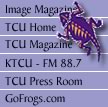 |
Representatives of 11 religions were joining Roman Catholics and other Christian denominations Thursday, responding to the pope’s call to proclaim that religion should never become a motive for conflict. They include Muslims, Jews, Buddhists, Hindus, Japanese Shintoists and representatives of African traditional religions. Speaking at his general audience at the Vatican, the pope stressed the need for “justice and forgiveness” and expressed hope that the gathering can make an actual contribution toward real peace. This ancient hill town, the birthplace of St. Francis, has played host to two earlier such gatherings called by John Paul: A daylong fast and prayer against nuclear war in 1986 and a rally for peace in the Balkans in 1993. The pope announced the latest peace day in November, emphasizing that religion must never be used as an excuse for violence and hatred. The ecumenical patriarch, Bartholomew I, spiritual leader of the world’s 300 million Orthodox Christians, accepted the invitation. The Vatican listed a 29-member Islamic delegation and 10 Jewish representatives. John Paul was scheduled to arrive Thursday morning on what Italian media have dubbed the “train of prayers,” bringing the religious leaders with him on a two-hour trip from the rarely used train station in the Vatican. Italy’s state railroad provided a seven-car train for the occasion. Italian media said authorities planned to deploy some 1,000 police along the route and to seal off this tiny town on their arrival. Premier Silvio Berlusconi was scheduled to welcome the pope. Workmen put up a giant plastic tent in the square in front of the Lower Basilica of St. Francis, where the main ceremony will be held. Franciscan monks took down crosses from the walls and removed other religious objects from rooms in a U-shaped convent near St. Francis’ tomb where a number of the religious guests will pray. As in the previous meetings, it was decided that the various religions would pray separately. The Vatican expressed satisfaction over the announced turnout, although several leaders said they could not attend because of prior commitments, including the Dalai Lama, who was in Assisi in 1986. John Paul last visited Assisi in January 1998, several months after a devastating earthquake wrecked much of the basilica which has been restored. More
leaks found at Australian radioactive spill Details of the leaks, which were not publicly disclosed at the time, have prompted the South Australian state government to review reporting procedures of all such spills, officials told The Associated Press on Wednesday. The officials said the leaks were not considered harmful to the public. Earlier this month, some 15,600 gallons of radioactive fluid leaked from a pipe at the Beverley uranium mine, 370 miles north of the state capital, Adelaide. The spill was not publicly disclosed until more than 24 hours later. Mine operator, Heathgate Resources, said the liquid was composed of salty ground water, sulfuric acid, uranium and oxygen and was “naturally radioactive.” A spokesman, Stephen Middleton, said the spill was contained in a drain surrounding the complex and had posed no threat to the environment, the public or mine workers. The Jan. 11 spill brought calls from environmentalists for the closure of the mine, located in an isolated, sparsely populated desert area. A full report into the spill and conditions under which the Beverley mine could resume commercial operations would be released later this week, said a spokeswoman for the South Australia state mines minister. Investigations after the spill found there have been 24 other leaks at the mine over the last two years, three of which were listed as more than 520 gallons, government officials said. All the spills were considered minor and were not harmful to the public. Concerned that the leaks went little noticed for so long, the state government will review the system for reporting radioactive spills at uranium mines, said a spokeswoman for state Mines Minister Wayne Matthew. Environmental groups said the spills pose dangers to workers and the underground water supply and have called for the mine to be closed. Earthquakes
plague Congo region of Africa The eruption of Mount Nyiragongo on Jan. 17 has left 10,000 families without shelter and hundreds of thousands without any livelihood. Earthquakes continue to shake the region, some of them strong enough to destroy buildings that escaped the three huge lava flows that cut through the center of the city. Across the border in Rwanda, which escaped the lava, the Ministry of Local Government reported that 288 homes and 19 schools had been destroyed by the almost hourly earthquakes. Vulcanologists have said Nyiragongo’s eruptions are over, but the earthquakes will continue as the magma inside the mountain settles. In the Rwandan town of Ruhengeri, 30 miles northeast of Goma, the aid agency Oxfam said it was preparing an isolation space for possible cholera cases after some Congolese refugees in its camp complained of feeling ill. |
|
|
TCU Daily Skiff © 2002 |
||

